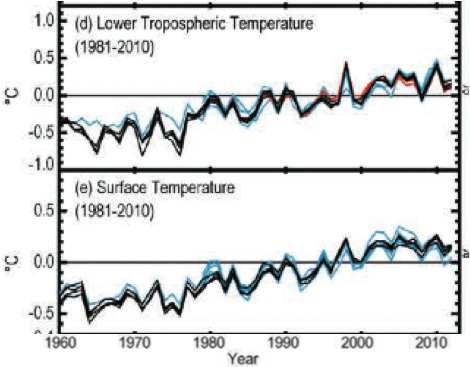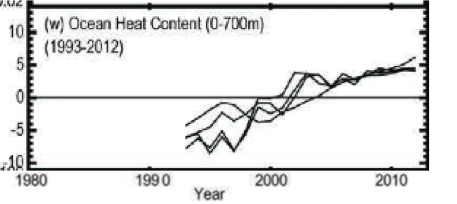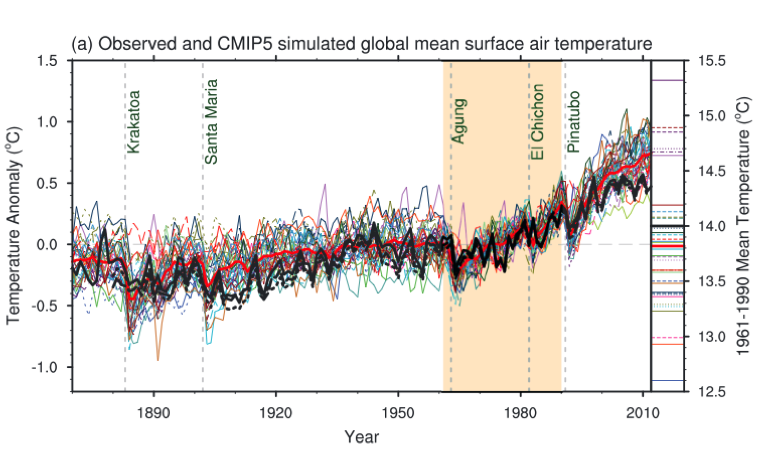A recent op-ed in the Wall Street Journal dredges up debunked conclusions drawn from a cherry-picked set of temperature measurements to try to call into question the reality and potential severity of climate change.
In a nutshell, authors Richard McNider and John Christy argue that warming in the upper atmosphere since 1979 is less than models had predicted and, therefore, models can’t be trusted and climate change shouldn’t be a concern.
In fact, virtually all climate data and research show that the Earth is warming. And it will continue to do so if we keep pumping greenhouse gases into the atmosphere. And this warming will bring an increased risk of more frequent and intense heat waves, higher sea levels, and more severe droughts, wildfires, and downpours.
To get at the facts, we can draw on recent climate assessments, including the State of the Climate report compiled by National Oceanic and Atmospheric Administration (NOAA), the Intergovernmental Panel on Climate Change (IPCC) Working Group I report, and the National Research Council’s America’s Climate Choices, plus other recent research (Thorne et al., 2011, Santer et al., 2013).
Based on this research, here are three things to keep in mind:
1) The Earth is warming.
The op-ed authors focus on upper air measurements alone, arguing these are the best indicator for climate change. But this narrow view omits a wealth of valid observational data. We know that the surface over the land and ocean has been warming, the lower atmosphere has been warming, and the heat stored in the ocean has increased (see Figures 1 and 2). The upper atmosphere data shown by McNider and Christy include a portion of the stratosphere (a separate layer of the atmosphere above the troposphere) that is cooling in response to the accumulation of greenhouse gases. To put it simply, greenhouse gases trap heat, especially in the low-level troposphere. This means less heat from the Earth reaches the stratosphere, resulting in cooling at this higher layer. By including a portion of this layer, McNider and Christy are averaging two different climate-change-induced effects to conclude that nothing at all is happening.



